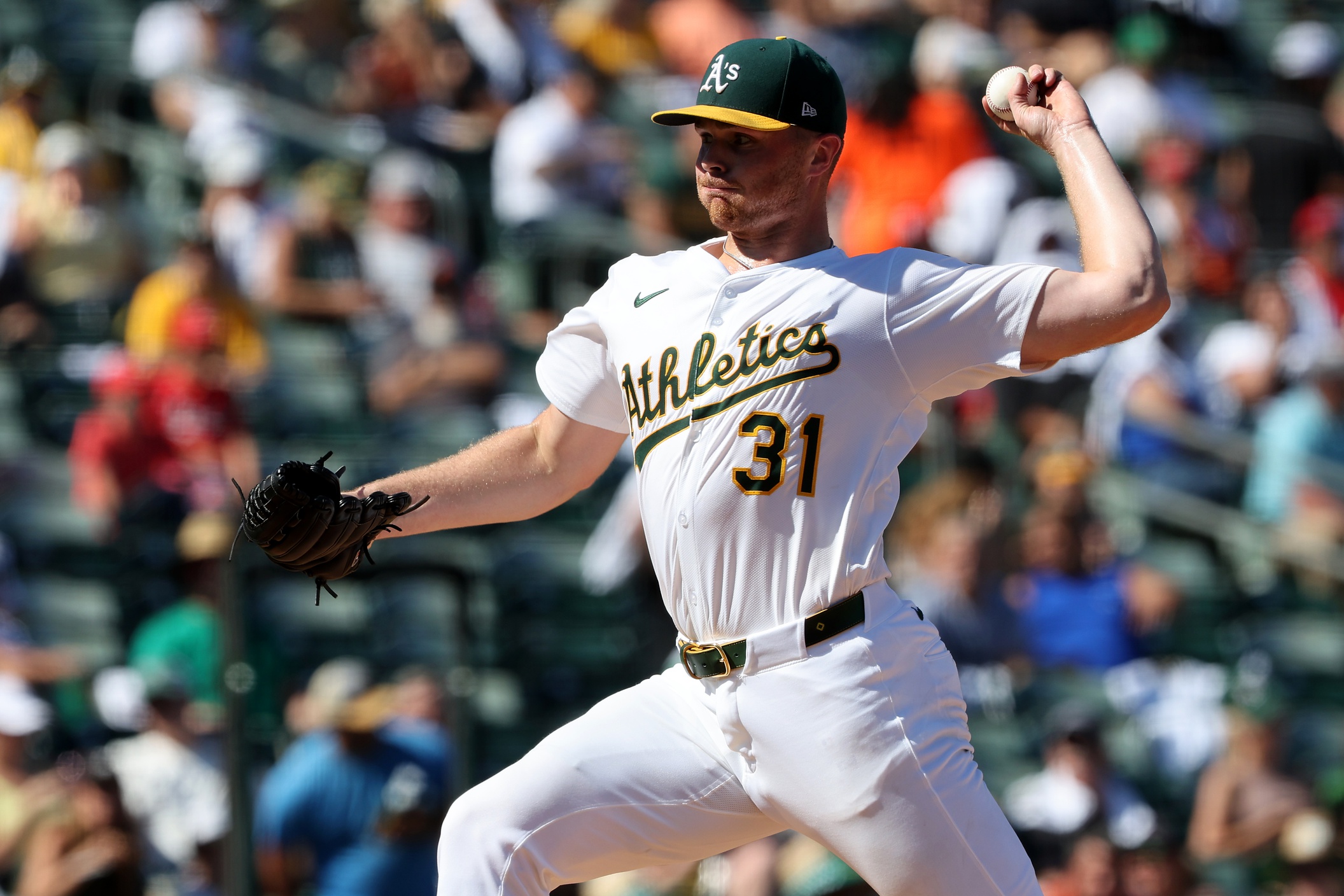With the calendar flipping to May, more draft rankings are being published. Friend of Sox Machine Jim Callis and the rest of the MLB.com team have posted their top 150 prospects list. Baseball America has now expanded its list to include 400 players. Other sites that I trust their judgment on, like Prospects Live and Future Star Series, continue making updates on how they rank this class.
Three college bats are consistently ranked inside the top 10: Oregon State shortstop Aiva Arquette, Texas A&M outfielder Jace LaViolette, and Wake Forest shortstop Marek Houston. After them, there are a lot of college pitching and high school position players scattered around the top 20. The next Sox Machine Draft Rankings update will be released before conference tournaments and expanded to 100 players. I’m not foreseeing any big leaps from the current top 50 unless injuries pop up, but LSU’s Kade Anderson is one college pitcher gaining a lot of draft helium and putting himself squarely in the top five pitchers available.
Liam Doyle vs. Kade Anderson
When Tennessee started the season 20-0, they were the best team in college baseball. I wasn’t sure who could keep up with the Volunteers team that was loaded with four future top-50 picks in Liam Doyle, Dean Curley, Gavin Kilen,and Andrew Fischer. Since that torrid start, the Vols have been 16-9 and 13-8 in SEC play, losing home series to Texas A&M and Kentucky. They are more mortal than I thought.
With a visit to Baton Rouge this past weekend, it was a good time to check back in with Tennessee to see how they are faring, facing an LSU team that’s been great all season but not as loaded on the draft front as recent seasons.
I was worried about how the two aces would start after a three-hour delay due to lightning around Baton Rouge. It was clear how often Doyle was going to the rosin bag that humidity was a significant factor. Trying to keep the pitching hand dry enough was a struggle as Doyle threw 20 pitches in the first inning. Many fastballs were missing up in the zone, but Doyle maintained the impressive velocity he's displayed all season, hitting 97 mph.
Anderson didn't have Doyle's sweaty hand issue but labored a little in the first, tossing 18 pitches. He walked Curley on five pitches to start the game before striking out Fischer and Hunter Ensley for a scoreless first inning. Anderson was reaching 96 mph early on the TV gun with the four-seamer.
As the game progressed, I noticed that Anderson was more comfortable with his secondary pitches than Doyle, and he was not afraid to start hitters with breaking stuff. Whether it's an 80 mph curveball hitters weren't looking for or a sweeping slider to lefties coming in the high-80s, the command of Anderson's breaking stuff was so impressive that I now understand why some in the draft analyst community think he's got a better profile than Doyle.
Anderson had to face Kilen, Fischer, and Hunter Ensley in the third inning. He started Kilen with an 80 mph curveball that nailed the middle of the plate and followed that up with back-to-back 94 mph four-seamers. While it’s a three-pitch strikeout against one of the better-performing college bats all season, Anderson’s fastballs were pretty hittable over the plate. I chalk that up to Kilen just not seeing Anderson well.
Four-seamer command was better against Fischer, starting with a 96-mph heater up in the zone that generated a whiff. After a 95-mph four-seamer missed on the outside corner, Anderson picked up a second strike when Fischer watched a fastball nail the lower part of the strike zone. Ahead with a 1-2 count, I was expecting Anderson to throw a breaking pitch, but instead, his four-seamer off the plate was too close for Fischer to lay off, who whiffed for another strikeout. The inning ended when Huntley fouled out on an 89-mph slider. The heart of Tennessee’s lineup went down in nine pitches.
That level of efficiency from Anderson carried through the fourth and fifth innings, as he only threw 19 pitches combined in those two frames despite striking out three. Anderson was only at 63 pitches entering the sixth inning of as scoreless game, but he ran into problems the third time through. Kilen led off with a single and advanced to second base on a wild pitch. Fischer followed up with an RBI single to center field, giving Tennessee a 1-0 lead.
In the seventh inning, Anderson allowed a double and a walk but didn’t allow a run. Nonetheless, both frames were labor-intensive as he tossed 22 pitches apiece in the sixth and seventh innings. LSU coach Jay Johnson had Anderson start the eighth inning to face Kilen for a fourth time. He won that battle as Kilen fouled out, but Fischer picked up his second hit with a double to right field. At 114 pitches, Anderson’s night was done but Fischer would later come around to score, putting that earned run on his record.
| Pitches by Inning | ||
| Liam Doyle | Inning | Kade Anderson |
| 20 | 1 | 18 |
| 12 | 2 | 17 |
| 15 | 3 | 9 |
| 20 | 4 | 9 |
| 12 | 5 | 10 |
| 15 | 6 | 22 |
| 15 | 7 | 22 |
| - - - | 8 | 7 |
The final line for Anderson: 7.1 IP, 6 H, 2 ER, 3 BB, 11 K. It’s a delivery that reminds me a little of New York Yankees starter Max Fried, and he maintained four-seam velocity past his 100th pitch, as he still hit 94 mph then. While I would grade his fastball scouting grade below Doyle’s, I think Anderson has better breaking stuff currently. Or at least he is more confident in his breaking stuff to move sliders around the strike zone.
Meanwhile, Doyle was Doyle. Despite fighting the humidity, Doyle only allowed one hit as he reached the seventh inning on 109 pitches. He didn't strike out as many hitters as Doyle (6 Ks), but he won the duel late. At pitch No. 93, Doyle could still reach back and hit 97 MPH. I also had Doyle throwing a few more sliders and cutters in this start, trying to bust right-handed hitters on the inner half. I am noticing that Doyle doesn’t do a great job of holding runners at first base. Sometimes, not even looking over makes him susceptible to being run on.
Doyle and Anderson have 11 starts on the season, and the LSU lefty is not that far behind. While Doyle still leads the NCAA in strikeouts with 110, Anderson has 102, which is good for third in the country.
| Pitcher | GS | Innings | ERA | FIP | xFIP | K% | BB% |
| Liam Doyle | 11 | 64.2 | 2.23 | 3.07 | 3.17 | 44.2% | 8.0% |
| Kade Anderson | 11 | 64.2 | 3.76 | 4.32 | 3.3 | 38.8% | 6.1% |
Anderson, a draft-eligible sophomore, gives this upcoming class three college lefties that merit top-15 consideration. Jamie Arnold has been on a roll lately, and I’m not pivoting from my mock draft prediction of him going to the Los Angeles Angels. I still think Doyle is worth a top-10 pick.
With Anderson, I'm wondering if he'll appepar on the White Sox radar at Pick 10? It would help if college hitters started to perform, as the franchise needs more bats. Right now, the best players available to the White Sox will either be a prep bat or a college pitcher. If Arnold and Doyle are off the board, perhaps Anderson is a realistic possibility.






